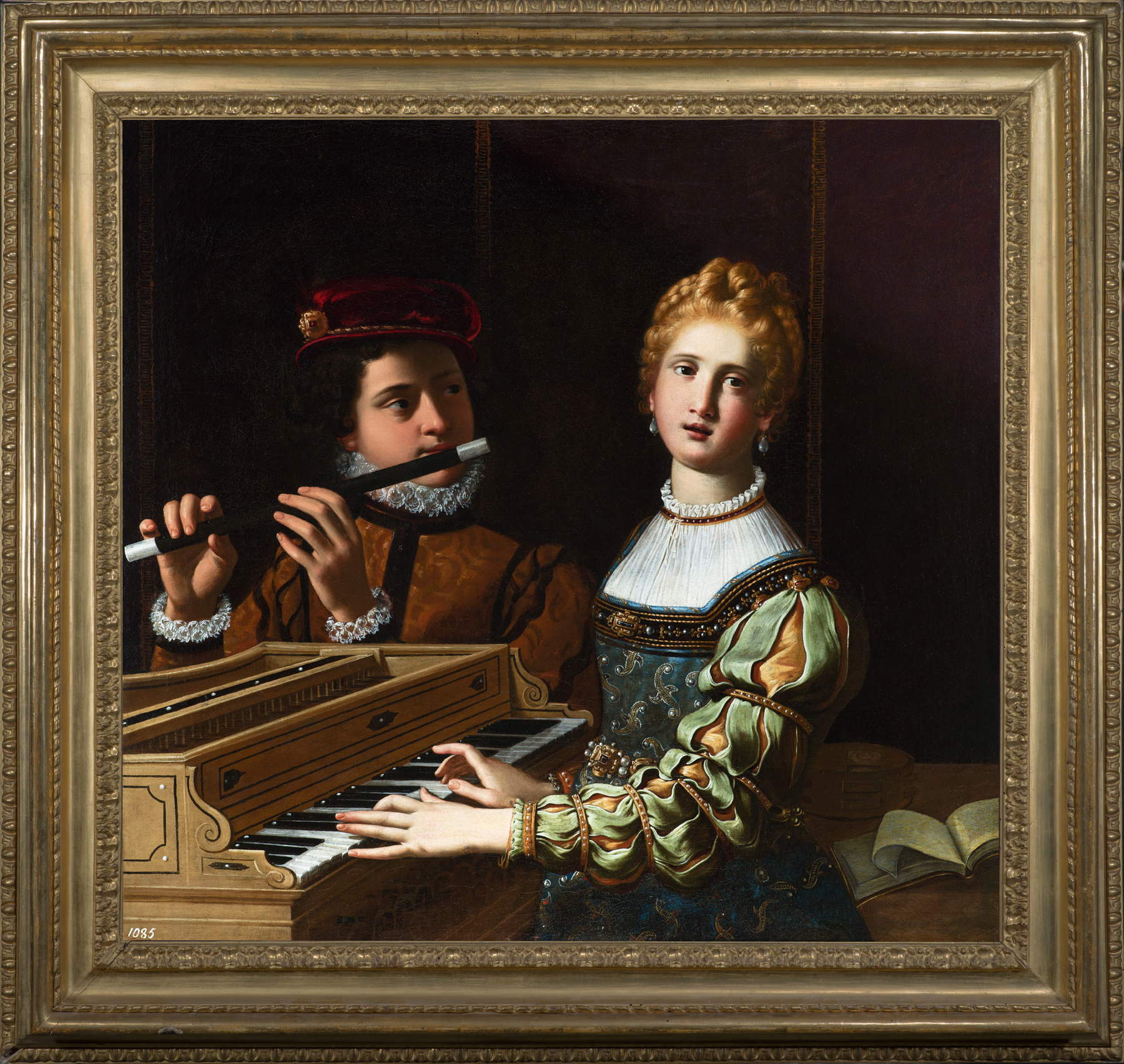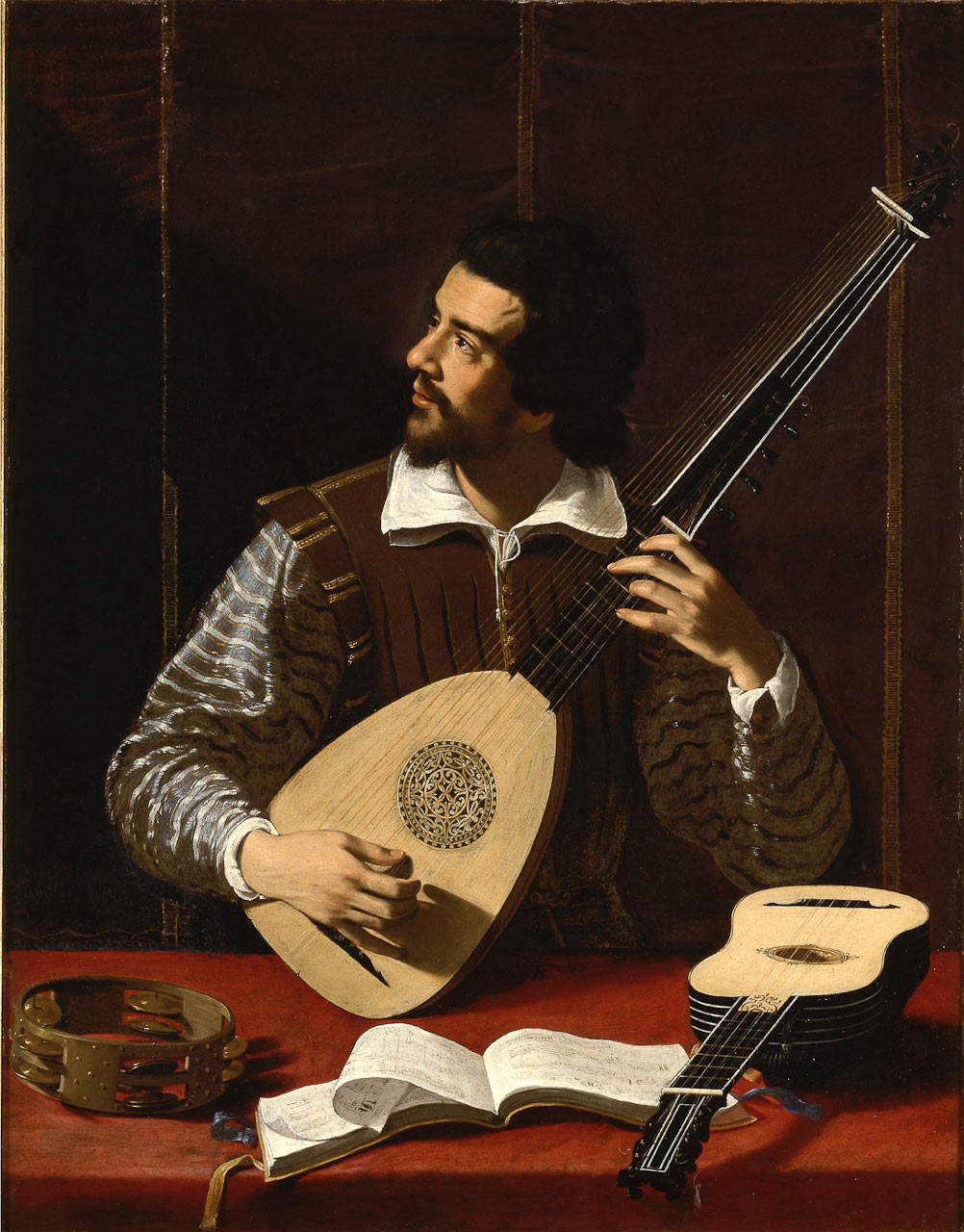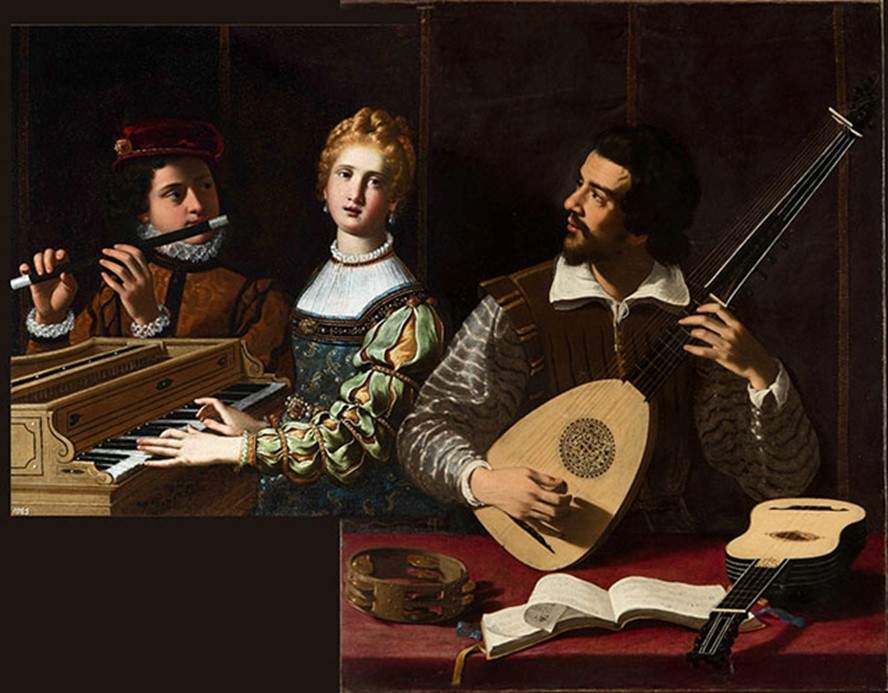Presented this morning in Turin was the exceptional acquisition by the Royal Museums of the Concerto a due figure by Antiveduto Gramatica (Siena, 1569 - Rome, 1626), recently acquired by the Ministry of Culture - Directorate General for Museums specifically for the Turin institution and in particular for the Galleria Sabauda. The canvas, which will be juxtaposed with Suonatore di tiorba, a work that has become a symbol of the museum, recomposes the figurative layout of the painting La Musica, recorded in 1627 in the inventory of the Roman collection of Cardinal Francesco Maria Del Monte, a great collector of Caravaggio and Gramatica. From February 28 to March 5, 2023, the two reunited masterpieces are exceptionally displayed on the second floor of the Galleria Sabauda, in one of the rooms dedicated to Caravaggio’s masters and recently rearranged.
The Concerto resurfaced last year, and its discovery, first reported on these pages, was announced by the Caretto & Occhinegro gallery, and following a careful study by Gianni Papi, the greatest specialist on Antiveduto Gramatica, and several technical analyses, it had been possible to ascertain that the Concerto was precisely the missing part of the Musica, the composition of which was known thanks to later copies. The work was divided at an unspecified time, probably between the seventeenth and eighteenth centuries, and the two fragments took different paths, but much of their history has yet to be reconstructed.

 Antiveduto
AntivedutoThe Theorbo Player entered the Turin collection of Marquis Tancredi and Giulia Falletti di Barolo in the 19th century and was later donated by the family to the Galleria Sabauda in 1864, along with an important nucleus of other works. Of the Concerto a due figure, perhaps transited in the Roman collection of the Torlonia family (as the letter “T” followed by the number 94 on the back of the canvas would suggest), traces were completely lost, until it reappeared in 2022 on the antiques market.
The two fragments, thus reunited after four centuries and datable within the first decade of the seventeenth century, allow us to appreciate one of the youthful peaks of Gramatica’s activity, of great refinement in the rendering of figures and drapery, in the chromatic quality of the browns and bright colors, and in the precise and faithful restitution of the musical instruments, characters in which the adherence to the new language introduced by Caravaggio is manifest.
The work is also particularly significant in relation to the fortune that, in the early seventeenth century, the theme of music enjoyed, in Rome as in the Savoy court: in the figure of the theorbo or archlute player, as some musicologists believe, should be recognized the famous chamber music composer Cesare Marotta (or his colleague Vincenzo Pinti, “Knight of the Lute”), while the female figure could be identified with Marotta’s wife, Ippolita Recupito, a sublime interpreter of monodic singing, appreciated by Cardinal Del Monte.
The two canvases will again be presented to the public, after extensive diagnostic investigations, at the exhibition La Musica di Antiveduto Gramatica e la collezione Falletti di Barolo, scheduled from June 9 to October 1, 2023 on the second floor of the Galleria Sabauda in Turin.
 |
| Antiveduto Gramatica's Concerto officially enters the collection of the Royal Museums of Turin |
Warning: the translation into English of the original Italian article was created using automatic tools. We undertake to review all articles, but we do not guarantee the total absence of inaccuracies in the translation due to the program. You can find the original by clicking on the ITA button. If you find any mistake,please contact us.